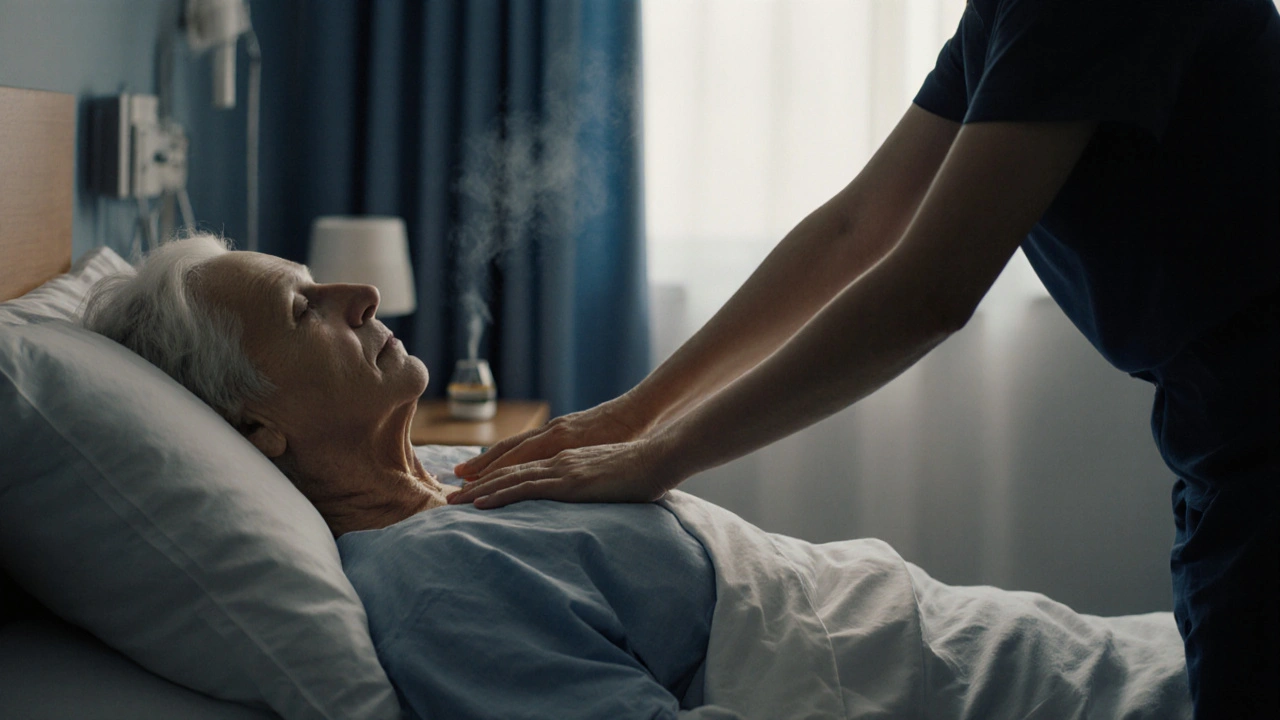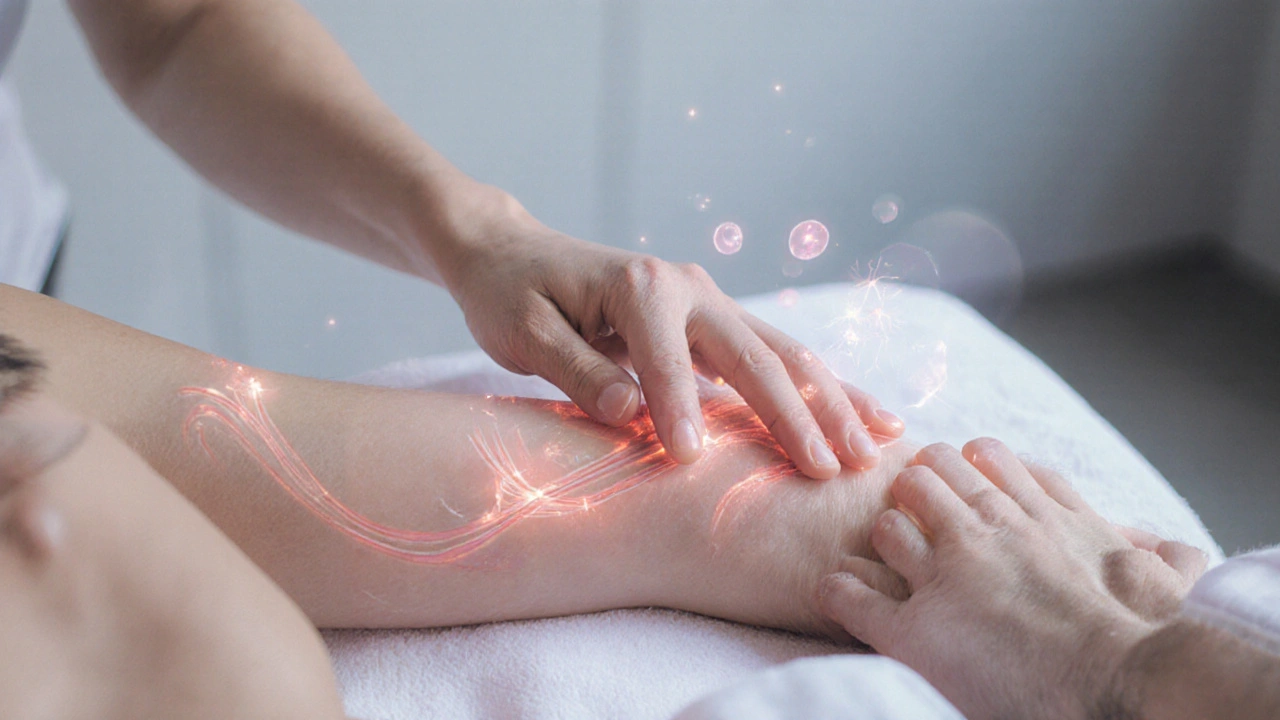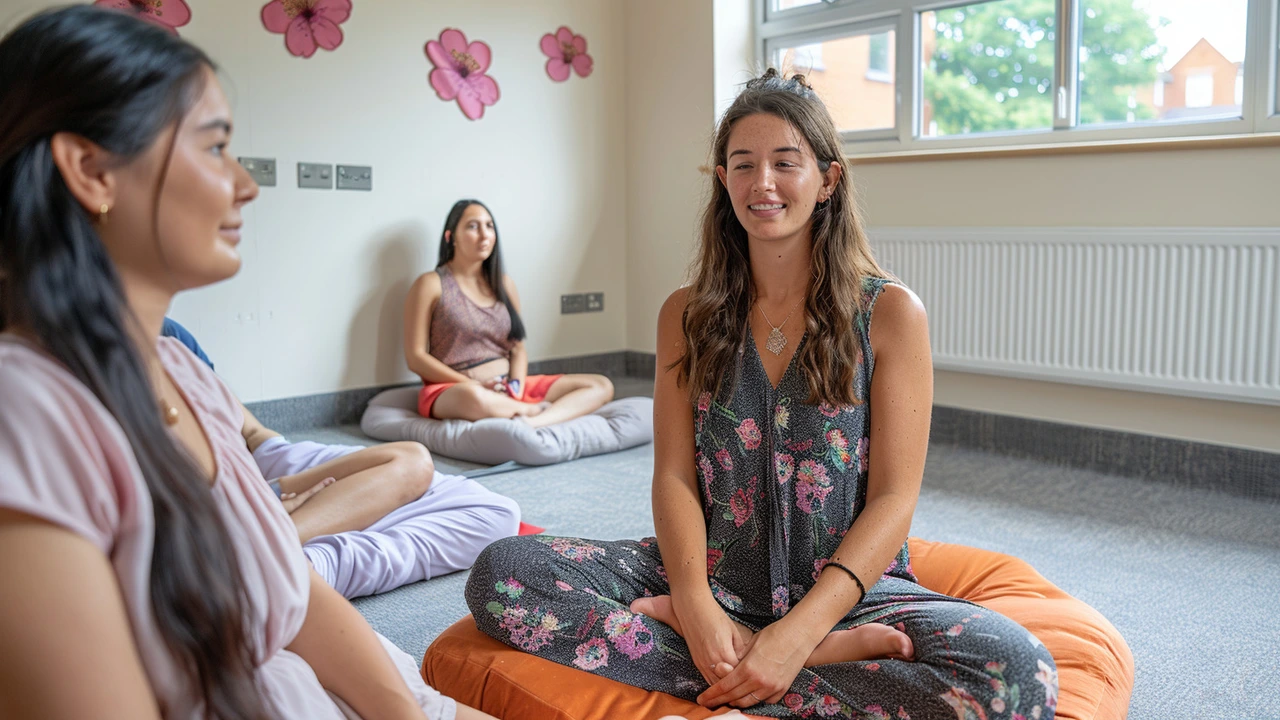How Palliative Massage Boosts Healing and Comfort

Palliative Massage Pain Reduction Calculator
How It Works
Research from the University of Toronto (2022) shows palliative massage can reduce pain by up to 30%. This tool estimates how much pain relief you might experience based on your current pain level.
Not calculated yet
What to Expect
With regular palliative massage:
- 30% Average pain reduction
- +25% Improved relaxation
- +20% Better sleep quality
Imagine lying in a quiet room, soft music playing, while gentle hands ease the tension that has built up over weeks of treatment. That's the essence of palliative massage - a therapeutic touch designed to bring comfort to people facing serious illness.
What Is Palliative Massage?
Palliative Massage is a specialized form of massage therapy that focuses on relieving pain, reducing anxiety, and improving overall quality of life for patients in palliative or end‑of‑life care. It differs from a typical spa session because the goal is therapeutic relief, not luxury. A therapist works closely with the medical team to tailor pressure, duration, and techniques to the individual's health status.
How It Works: Physiological Benefits
When gentle pressure is applied, the body releases endorphins - natural painkillers that also lift mood. Blood circulation improves, helping to soften edema and enhance tissue oxygenation.
Pain Management refers to strategies that reduce or eliminate discomfort, often through medication, physical therapy, or complementary approaches like massage benefits from these biochemical changes. Studies from the University of Toronto in 2022 showed that patients receiving regular palliative massage reported a 30% reduction in perceived pain scores compared with standard care alone.
Stress hormones such as cortisol decline, which can help lower heart rate and improve sleep quality - both critical for maintaining energy during illness.
Common Techniques Used
Therapists draw from several gentle modalities. Below is a quick guide to the most frequently used methods.
| Technique | Primary Benefit | Typical Session Length |
|---|---|---|
| Swedish Massage a light‑to‑moderate stroke method focusing on relaxation | Reduces anxiety and improves circulation | 15-30 minutes |
| Myofascial Release slow, sustained pressure targeting connective tissue restrictions | Alleviates deep muscle tension and joint stiffness | 20-40 minutes |
| Gentle Stretching passive movements to maintain range of motion | Prevents contractures and improves mobility | 10-20 minutes |
Therapists keep pressure light, often using a feather‑light “effleurage” glide that can be adjusted based on the patient’s comfort level.

Who Can Benefit?
Anyone receiving palliative care may find value, but certain groups see the most impact.
- Patients individuals diagnosed with a serious, life‑limiting illness such as cancer, advanced heart disease, or neuro‑degenerative conditions who experience chronic pain, muscle tightness, or emotional distress.
- Family Caregivers people who provide daily support and often carry high levels of stress can also benefit from a brief session to lower their own cortisol levels, improving patience and emotional resilience.
Safety and Contraindications
Because patients may have fragile health, therapists follow strict guidelines:
- Check platelet counts - low levels (<50,000/µL) increase bleeding risk.
- Avoid deep tissue work over areas with open wounds, active infections, or bone metastases.
- Monitor temperature - febrile patients may need delayed sessions.
- Coordinate with the medical team; any sudden changes in vitals require immediate pause.
Integrating Into Palliative Care Teams
Palliative Care a multidisciplinary approach that focuses on relieving symptoms and improving quality of life for patients with serious illness increasingly includes complementary therapies. Hospitals in Melbourne and Sydney have added licensed massage therapists to their hospice units, reporting higher patient satisfaction scores.
Collaboration looks like this:
- The attending physician orders a “massage consultation” based on pain assessments.
- The therapist reviews the patient’s chart, noting medication, allergies, and mobility limits.
- After each session, the therapist documents outcomes (pain level, mood rating) for the care team.

Getting Started: Finding a Qualified Therapist
Not every massage practitioner is trained for palliative settings. Look for these credentials:
- Certification in Massage Therapy recognized by a national board such as the Australian Association of Massage Therapists (AAMT).
- Additional coursework in “Therapeutic Massage for Palliative Care” or similar.
- Experience working in hospitals, hospice facilities, or home‑care environments.
- References from physicians or palliative care nurses.
In Perth, the hospice at St. John of God Health Care maintains a list of vetted therapists. Many private clinics also offer “palliative packages” that include initial assessment, 2‑week trial, and ongoing support.
Key Takeaways
- Palliative massage is a gentle, evidence‑based tool that reduces pain, anxiety, and improves sleep.
- Techniques such as Swedish massage, myofascial release, and gentle stretching are adapted for fragile health.
- Both patients and family caregivers experience measurable stress relief.
- Safety checks (platelets, wounds, fever) are essential; always coordinate with the medical team.
- Seek therapists with specific training in palliative care and verify credentials through reputable bodies.
Frequently Asked Questions
Can palliative massage replace medication for pain?
No. Massage is a complementary approach. It can lower the required dose of analgesics, but it should be used alongside prescribed medication, not instead of it.
How often should a patient receive a session?
Frequency varies with condition and tolerance. Many hospice programs schedule 2-3 sessions per week, each lasting 15-30 minutes, adjusting as the disease progresses.
Is it safe for someone with bone metastasis?
Therapists avoid deep pressure over affected bones and focus on light, soothing strokes. Always inform the therapist of any bone lesions before the session begins.
Do insurance plans cover palliative massage?
Coverage depends on the provider and policy. Some Australian Medicare plans and private insurers include allied health services for eligible palliative patients, so it’s worth checking the specifics.
Can family members learn simple techniques to use at home?
Yes. Many hospice teams offer short training sessions on gentle effleurage and positioning to help caregivers provide comforting touch between professional visits.





